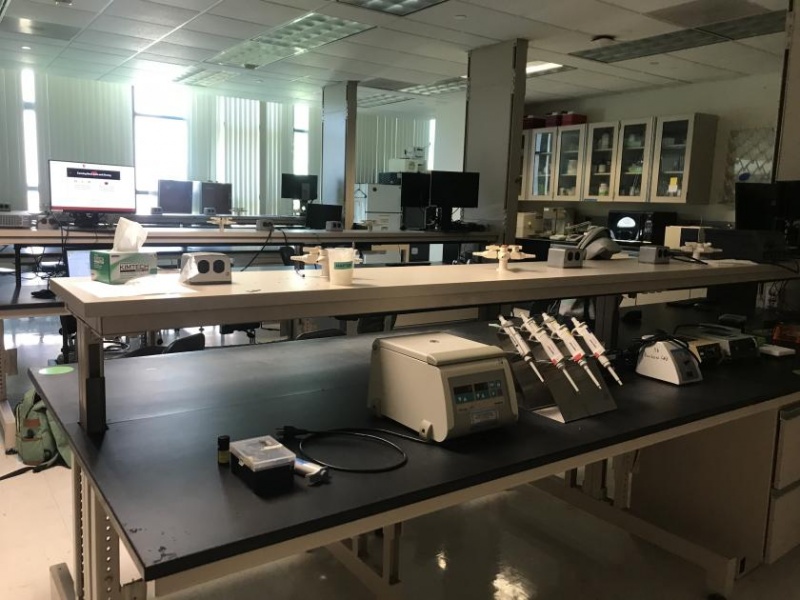
Navigating to Safety
Safety
Pre-Lab Precautions
Safety is of the utmost importance to the Stony Brook iGEM team. With this in mind, all team members underwent rigorous safety training in the spring before the commencement of wet lab work. Before stepping foot in the lab, all team members were required to complete three online training courses from Stony Brook University regarding lab safety and proper handling of chemical and biological wastes: ENV001: Hazardous Wastes, ELS002: Lab Safety - Chemical Hazards, and ELS003: Lab Safety - Safe Handling of Biological Hazards. Each course required a passing score of 80% on each of several unit quizzes to prove mastery of the material. In addition, all team members completed the CITI Program Course on Responsible Conduct of Research in The Biomedical Sciences.
Our iGEM team is housed in a BSL-2 equipped laboratory under the supervision of Dr. John Peter Gergen and other professors, advisors, and graduate students. No team members are permitted to be in the lab unless a supervisor was notified of what they are working on and present in case of an emergency.

Lab Environment, Equipment, and Chemicals
Our iGEM team conducts all wet lab work in a lab with standard safety equipment. We have an eye-wash station, safety shower, fire extinguishers, and biohazard waste disposal containers. In addition, we have lab benches and two fume hoods that provide a sterile and safe environment for working with bacteria, carcinogenic chemicals such as ethidium bromide, and bunsen burners. Our fume hoods are equipped with UV light to ensure proper sterilization and a blower to ensure proper ventilation. When we are done working with chemicals, we discard them in properly labelled and dated liquid waste containers that are in compliance with Stony Brook University safety requirements. We have a separate waste container for gloves, old petri-dishes, and broken equipment.
To avoid injuries and chemical contamination, all members of the lab are required to wear proper apparel. Everyone complies with standard safety requirements such as wearing full length pants and closed toed shoes and tying long hair back. Additionally, we wear goggles, gloves, and lab coats when handling chemicals or conducting any experiments.

Device Safety
We aim for our degradation product to be used by water treatment plants around Long Island. To minimize the risk of releasing genetically modified bacteria into the environment, our method prioritizes using a contained system. Our packed-bed bioreactor will tightly hold and transport E. coli cells through alginate beads. As the sampled water moves through our system, the beads will continuously degrade the MC-LR contaminants. Importantly, we would like for this to be used as a replacement for current industrial practices, such as ozonation, chlorination, and carbon absorption—both of which are quite toxic and corrosive to the environment. Our method is a cheap and convenient approach to water safety in the Long Island area and beyond.
COVID-19
Our team remains cognizant of the threat posed by COVID-19. Throughout the spring and summer, we have been carefully monitoring and complying with all University, Suffolk County, and New York State COVID-19 guidelines. Firstly, all team members have been fully vaccinated early on in the summer. Masks were not required for vaccinated individuals for some time towards the end of July, but when policies changed on August 3rd of 2021 to once again mandate social distancing and mask-wearing regardless of vaccination status, we rapidly adjusted our practices to comply with the new guidance. We also have hand sanitizing stations around the building.
Outside the lab, COVID-19 safety guidelines shaped our outreach and human practices efforts. Many meetings with our team, professors, and educational outreach events were held over Zoom to ensure social distancing. While we would have loved to interact with other students, professors, and the general public face-to-face, that was certainly not feasible given the pandemic.







